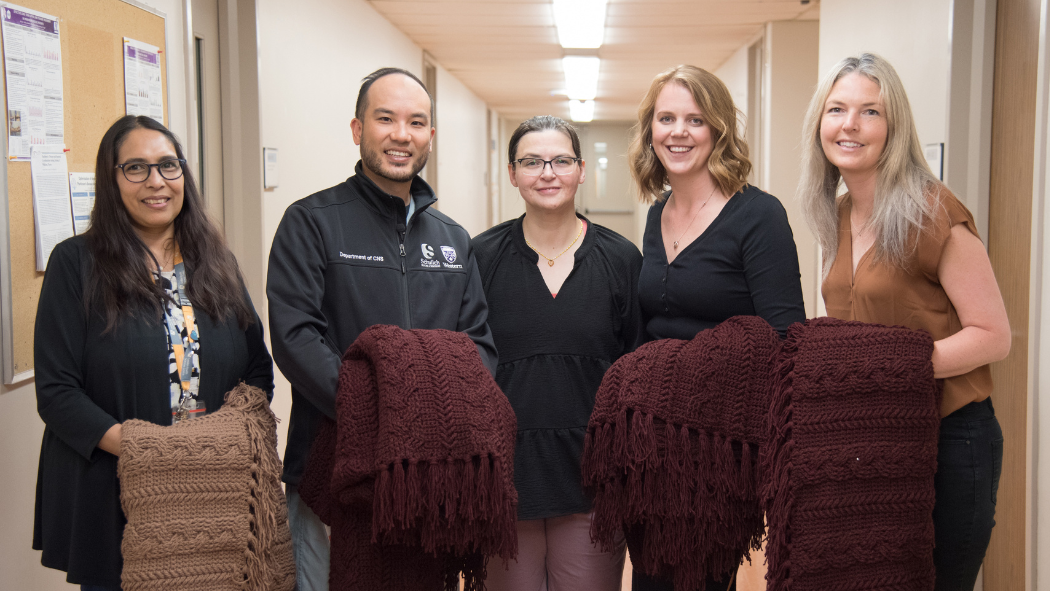
August 6, 2024
Trigger warning: This story deals with child abuse
The procedure, involving inserting a stimulator device into an area in the brain, allows patient Mandy Dostie relief from life-long pain.
The quote “Everything old is new again” captures the sentiment behind a recent life changing neurology procedure for patient Mandy Dostie.
Dostie came to London Health Sciences Centre (LHSC) in 2022 with significant pain in her face and no options left for treatment.
“I am a survivor of child abuse, which at some point resulted in chronic earaches. By the time I turned 18, they started getting more intense and the pain radiated down my face,” explains Dostie. "I was desperate and tried everything, but nothing would work, and I just couldn’t find a way to cope with the pain. Medication was not helping anymore because the pain was really bad, and I was losing all hope.”
When Dostie met with Dr. Jonathan Lau, Neurosurgeon, LHSC, he discussed a surgical option that hadn’t been thought of for quite some time.
“There were some thoughts of this back in the 1980s and 1990s but the technology was not robust enough,” said Dr. Lau. “With the development of new technologies and also our ability to target areas of the brain and nerves more precisely, we are now able to get a successful outcome.”
This breakthrough procedure was completed at LHSC as a Canadian first and includes inserting a stimulator device to cover certain areas of the brain where Dostie’s pain originated from. By knowing the source of the pain, this procedure, featuring a trigeminal ganglion stimulator, provides a unique treatment that either distracts the brain from the pain or gets rid of it.
As part of the treatment, patients like Dostie will go through a trial where the stimulator is put in temporarily. Then, with the help of a neuromodulation team, they see if they can adjust the stimulation to cover the pain area. If it works, a second procedure is done to implant the device permanently.
“It was like a 60 per cent pain reduction right off the bat. It was amazing, I had never felt that great in my life,” Dostie said.
“This is the first time this device has been implanted in Canada and in use for this capacity,” Dr. Lau added. “We listened to Mandy describe her pain and thought about the full extent of what different treatments we could offer. We were able to propose a unique opportunity to use this device to relieve Mandy of her pain. This device is more commonly used for spinal cord stimulation and there are no specially designed electrodes for treating facial pain, so this had to be adapted for this purpose.”
 As a thank you, Dostie visited Dr. Lau and the team that took care of her and gave them hand-made blankets.
As a thank you, Dostie visited Dr. Lau and the team that took care of her and gave them hand-made blankets.
“I have a family tradition where my grandmother used to make blankets and give them to people to thank them,” says Dostie. "She taught me how to crochet when I was six years old, so I wanted to continue the tradition and make a blanket for everybody to say thank you.”
Today, Dostie is excited to be pain-free and returning to a life she did not think possible.
“Not only has this taken away my pain, but I also had another amazing surprise. I went grocery shopping, and it began to snow, and when the snow hit my face, I felt the snow melt for the first time on my face since I was a little kid. I was just standing in the parking lot in tears from the sensation.”
Dostie has since re-enrolled in college and currently has the highest GPA in her cohort.
“This procedure saved my life, and now I’m living out my dreams.”
